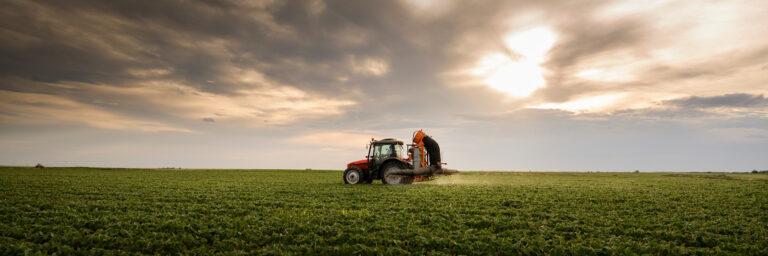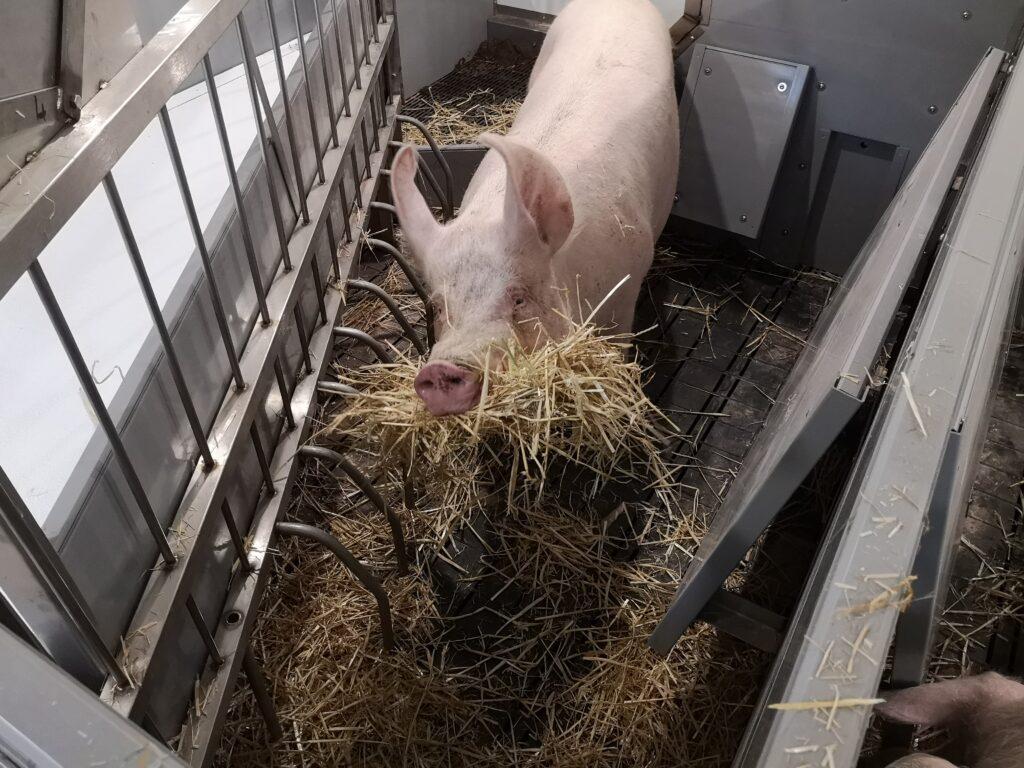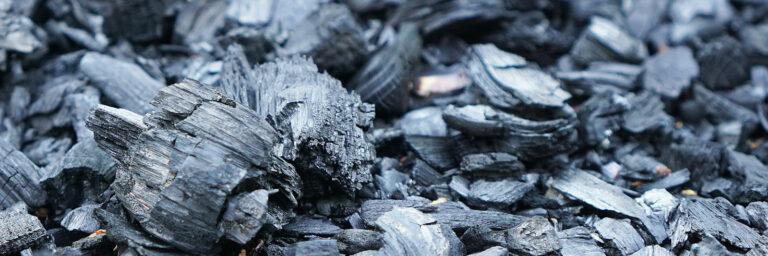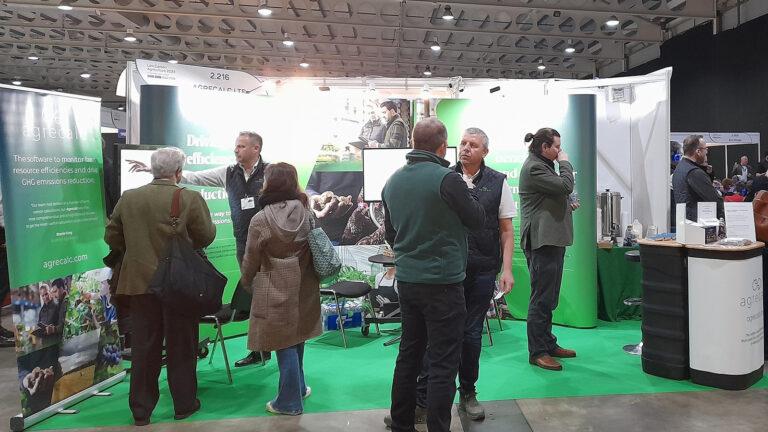
April Business Update: SRUC
After two years of operation as a Limited Company, Agrecalc became part of Scotland’s Rural College (SRUC) as of 1 April 2025.
Scenario-testing is one of Agrecalc’s biggest strengths. Learn how the calculator was used to test possible emissions scenarios in a Rapid Evidence Assessment (REA) of Alternative Indoor Farrowing and Lactation Systems, a research study led by SRUC.
The researchers wanted to know about the environmental impact of alternative farrowing systems, as the data on them is currently sparse. There are projects being undertaken at the moment in continental Europe, but it will be some time before this data would reach the audience. Therefore, modelling exercises are undertaken to discuss potential impacts.
Agrecalc was used as a preferred emissions calculator due to its commercial experience with the pork industry and the years of fine-tuning the models calculating cradle-to-gate emissions assessments from pig enterprises. Cradle to gate is an assessment of a partial product life cycle from resource extraction (cradle) to the gate (i.e. the farm gate).
The Rapid Evidence Assessment needed to calculate the Global warming potential expressed in kg CO2e per kilo of liveweight (lwt) and deadweight (dwt) of pig meat (net of purchase weight) and the effect of variables introduced into an alternative farrowing system.
The database inputs for the indoor conventional crate production have been provided by SAC Consulting (embedded feed emissions and diet nutritional specification standard rations) and AHDB Pork (e.g. direct emissions on-farm for the baseline scenarios – indoor crate; quantities of diets fed by stage (kg); number of livestock purchased, born and sold by growth stage; number of deaths and mortality by growth stage; opening and closing livestock weights (liveweight) at each stage and slaughter; etc.)
Agrecalc was used for scenario-testing with the following variable rates:

Providing the extra straw, as one of the characteristics of an alternative farrowing system (as for example, trialled in pilot and commercial projects in Scandinavia, continental Europe and the Netherlands), shows minimal rise in emissions and the “evidence for the benefits of providing nesting materials and enrichment for piglets is high”.
REA, page 47, point 7.1.6 et seq.
Agrecalc Tier II is certified to PAS 2050:20119 standards by approved verifier Lucideon CICS, providing assurance that the GHG emissions being reported are calculated in a consistent way across the industry. PAS 2050 was developed by the British Standards Institution (BSI) in response to broad community and industry desire for a consistent method for assessing the life cycle GHG emissions of goods and services. It provides a common basis for GHG emission quantification that informs and enables meaningful GHG emission reduction programmes.
The Agrecalc Tier II calculations follow the GHG emissions methodology published in the Intergovernmental Panel on Climate Change (IPCC) and FAO GLEAM methodology for pigs and poultry. The Tier II methodology seeks to define livestock productivity, diet quality and management circumstances to support a more accurate estimate of feed intake for use in estimating methane and nitrous oxide production.
Piglet mortality is a major welfare, health and economic concern on pig farms. There is concern by producers of increasing piglet mortality when sows are given more freedom of movement around farrowing in systems alternative to the crate. Therefore, piglet mortality was a modelled parameter.
The baseline was established with the data for an Indoor breeder finisher with 12.2% piglet mortality, totalling at 7.8kg CO2e / kg dwt. In Scenario 1, the piglet mortality was a variable at 14%, producing a total of 7.93 kg CO2 / kg dwt.
In Scenario 2, the mortality percentage was raised to 18%, producing a total of 8.21 kg CO2e / kg dwt.
The conclusions reached from this variation was that the higher mortality reduces the number of pigs weaned from the same sow, thus lowering output. All else being equal, this increases emissions per kg of output, as there is a lower output to divide the emissions by.
Total emissions of CO2 remain almost unchanged, but falling output raises product per kg emissions.
When it comes to both methane and nitrous oxide, total emissions fall due to the lower average numbers of piglets alive. But output falls faster leading to higher per unit emissions in both cases (14% mortality and 18% mortality).
In Scenario 3, the piglet mortality remained at 12.2% as in the baseline for an indoor breeder finisher enterprise. The variable introduced was an extra 5 kg of straw per sow per lactation, used for encouragement of natural nesting behaviours and environment enrichment for the piglets. This variable marginally raised the embedded carbon emissions, by 0.26% (total emissions for the baseline equal 7.80 kg CO2e / kg dwt, and the emissions with the enrichment included total at 7.82 kg CO2e / kg dwt).
The conclusion can be drawn that although providing the extra straw, as one of the characteristics of an alternative farrowing system (as for example, trialled in pilot and commercial projects in Scandinavia, continental Europe and the Netherlands), shows minimal rise in emissions, the “evidence for the benefits of providing nesting materials and enrichment for piglets is high”. (REA, page 47, point 7.1.6 et seq.).
In Scenario 4, an Indoor Finisher Baseline had been established at a total of 3.04 kg CO2e / kg dwt, and a variable of higher weaning weights, quicker finishing was introduced (the mortality rate remained at 12.2%).
Piglets from alternative indoor farrowing units arrive at the finisher 374g heavier at 7.77kg, enabling finishing 1.6 days quicker, leading to lower average emissions, lower feed and electricity use.
The total of carbon dioxide emissions sits at 3.01 kg CO2e / kg dwt. When it comes to methane, average livestock numbers over a 12-month period are reduced due to the 1.6 days shorter finishing period. This leads to lower methane emissions from feed digestion. With nitrous oxide, shorter time on farm leads to lower nitrous oxide emissions from feed.
More research is needed to provide definite conclusions about the environmental and other viabilities of alternative farrowing systems.
As more producers contemplate installing alternative farrowing systems and higher welfare practices, more data can be utilised to inform models.
The power of Agrecalc lies in the scenario-testing option the calculator provides through modelling for possible outcomes when it comes to GHG emissions.

After two years of operation as a Limited Company, Agrecalc became part of Scotland’s Rural College (SRUC) as of 1 April 2025.

Biochar is a carbon-rich material produced by pyrolysing biomass, which offers a variety of potential agronomic benefits. In this guest article, Black Bull Biochar discusses how these effects work together to bolster productivity, sustainability, and resilience in farming.

The Agrecalc team is looking forward to welcoming you at our stand (2.844) at this year’s Low Carbon Agriculture Show, taking place on March 5 and 6, at NAEC Stoneleigh near Kenilworth.